3
3.1 REPUBLICANS AND NATIONALISTS
Spain had split in two sides that would fight to the death for three years. On the one side, the Republicans, those loyal to the government, encompassed a wide spectrum of political ideologies, often with different interests and objectives. Within the Republican side there were liberals, Socialists, Communists, Anarchists and Basque, Catalan and Galician nationalists. Some were fighting for a liberal democracy, some for a social revolution, others for the survival of their national culture and languages. What united them was their loyalty to a democratically elected government, a commitment to improving the social conditions of the many and a strong anticlerical sentiment. They were also open, to some degree, to the idea that the ‘historical regions’ of Spain had a special status within Spain.
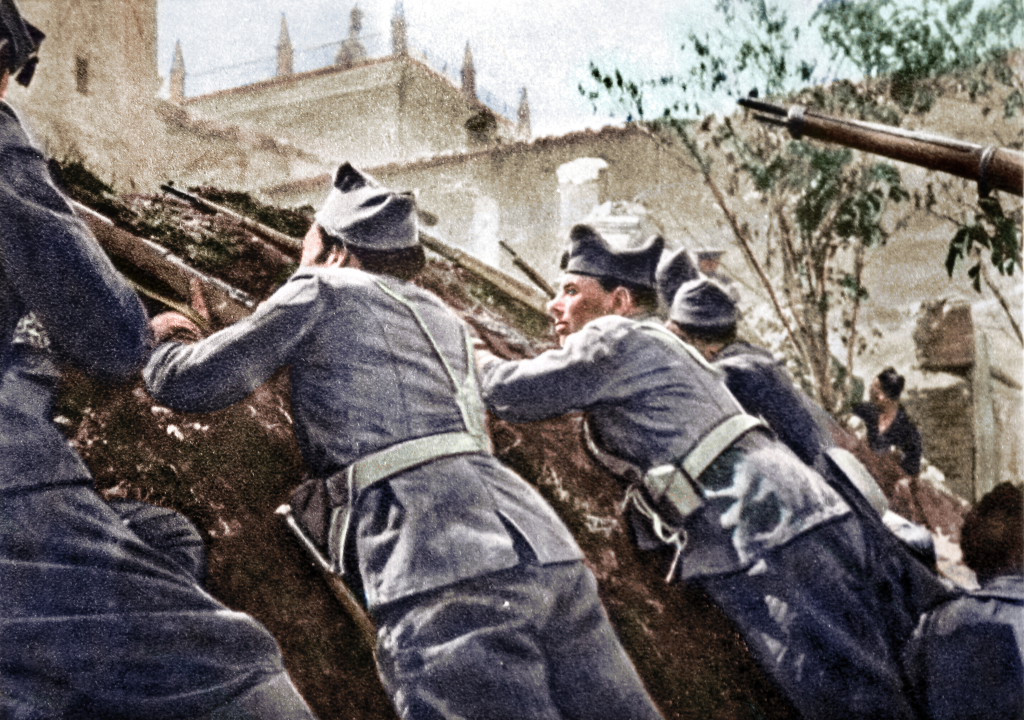
CULTURAL RESOURCES
Prelude to Tragedy (Documentary in English about the Second Republic) The Spanish Civil War, Episode 1
¿Se puede enamorar alguien de izquierdas de alguien de derechas? El Intermedio (TV programme on La Sexta)
On the other hand, the Nationalists included conservatives, monarchists, Carlists (monarchists who supported the monarchic right of a different heir to the throne) and Falangists (Spanish fascists). Their ideologies were also varied, from democracy to fascism, but, in general, they believed in a centralised Spanish state where the ‘historical regions’ would not have any form of self-government, their cultures would be reduced to a mere folkloric curiosity and Spanish would be the only official language. They wanted a strong state, preferably a monarchy, and a well-ordered society in which protests and strikes would not be tolerated. The Catholic Church’s role in society would be restored. The idea that they were fighting a Crusade to save Spain from its enemies, who they considered the ‘Anti-Spain’, became central to their mission and continued throughout the dictatorship. In 1936 the then bishop of Salamanca is reported to have said: ‘On the soil of Spain a bloody conflict is being waged between two conceptions of life … Communists and Anarchists are sons of Cain, fratricides, assassins of those who cultivate virtue.’
The high-ranking military officers that orchestrated the uprising thought they could take control of the country quickly, but the army was also divided and a civil war ensued. General Mola was the leader of the plot, but when he died in a plane crash in 1937, General Franco became the supreme leader of the Nationalist Army.
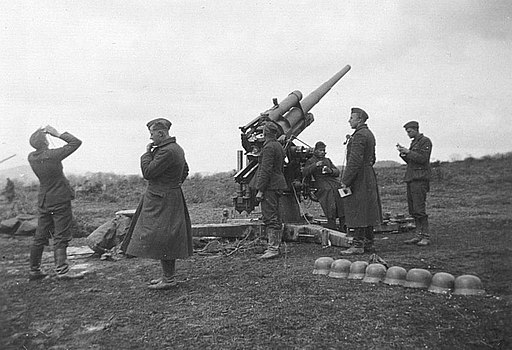
3.2 FOREIGN AID
Foreign aid was an important factor in the victory of the Nationalists. Hitler in Germany and Mussolini in Italy were very keen to help the rebels in Spain. Italian and German planes were paramount for the transport of the Spanish troops from northern Africa to the Peninsula at the very beginning of the coup. They also sent thousands of their own troops to fight alongside the Nationalist Army. Hitler took this opportunity to test weapons and military tactics that he would later use in WWII. The dictator Salazar in neighbouring Portugal was also on Franco’s side. He helped by providing some troops and logistical support. Apart from direct help from governments, the rebels also had support from sympathisers such as the Irish fascist Eoin O’Duffy and his 700 to 1,000 Blueshirts who came over to Spain to fight just for a few months without much success.
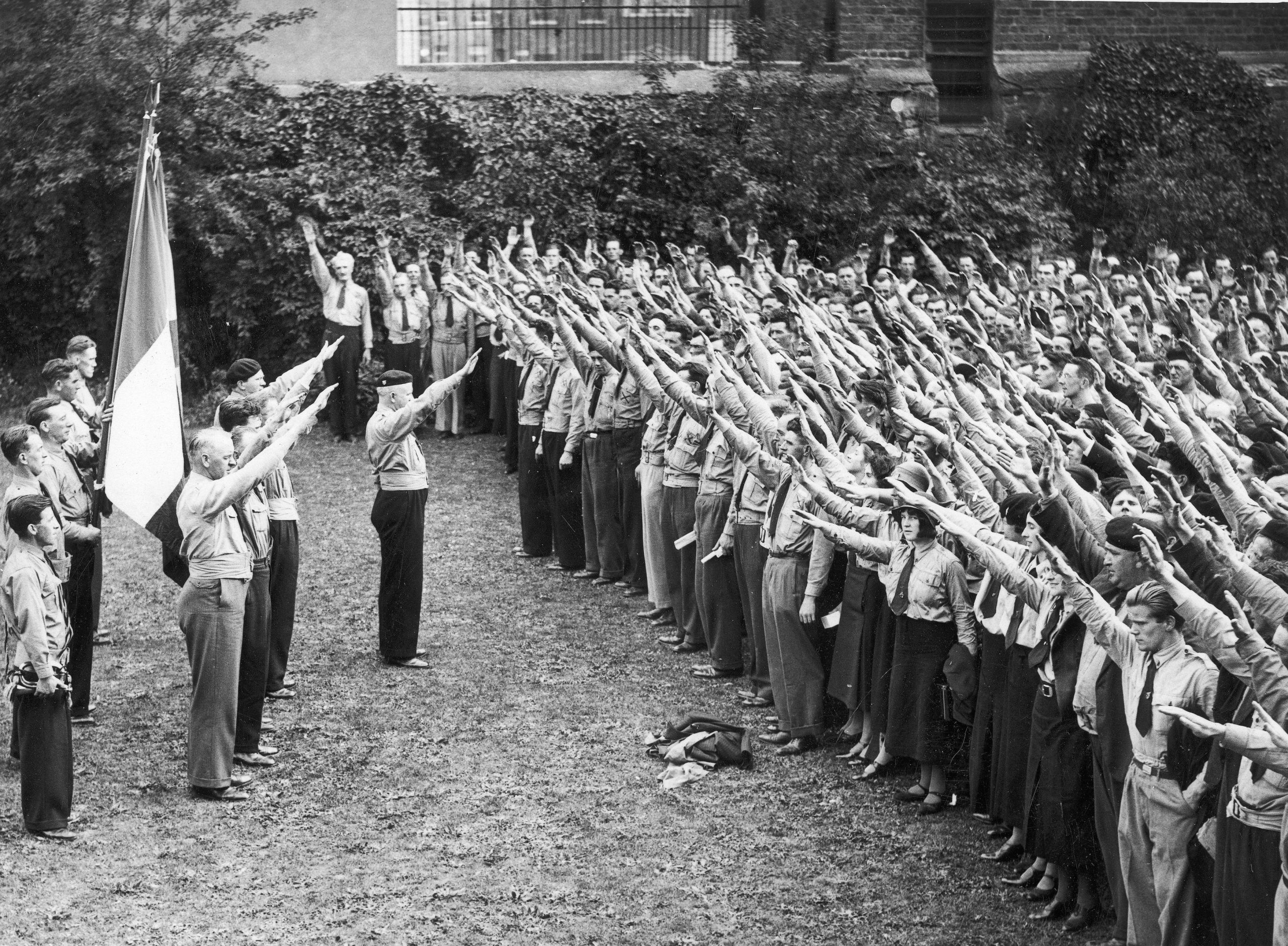
The Republican government and army could not count on any support from other democratic governments in Western Europe. Britain was ruled by the Conservative Party at the time and they were rather hostile to a left-wing government. In France, however, the Socialist Party was in power. They were initially keen on helping the Republican government, but the situation in Europe, with Hitler looming as an approaching threat, meant that France could not afford to antagonise Britain and, therefore, they decided against helping the Spanish government. European powers decided to sign a Non-Intervention Agreement, which in practice left the Republican government to fend for themselves, since Hitler ignored it and continued helping the Nationalist Army. At certain points the Republican government had to resort to acquiring weapons on the black market since the agreement precluded the sale of weapons to Spain.
The USSR (Union of Soviet Socialist Republics), under Stalin’s rule, decided to help the Republicans. By then Hitler was becoming a threat to the Soviet Union and the left-wing credentials of the Spanish Republicans, with an important Communist input, made it a good political move. Troops and weapons, fuel and food were sent to Spain. Two thousand personnel, including, pilots, training officers and secret police, travelled to the country. The Republican government paid for this help from the state’s gold reserves.
Unselfish help came from foreign volunteers known as the International Brigades. They came from fifty countries all over the world and were recruited mainly through trade unions and Communist parties. Around 40,000 fought on Spanish soil at one point or another. 10,000 lost their lives fighting for the Republic.
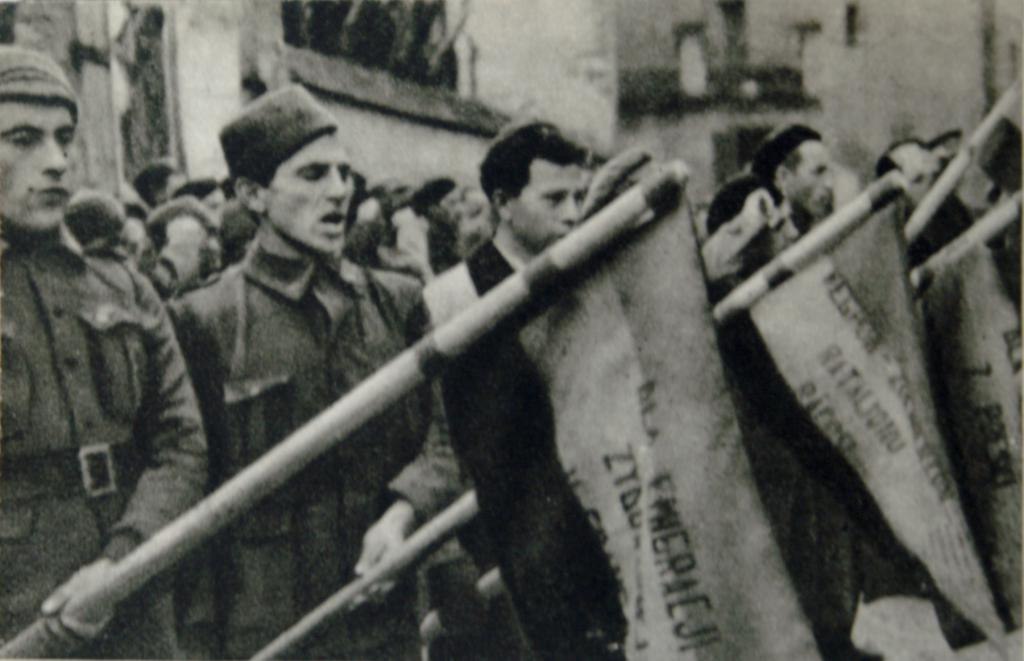
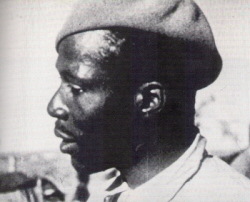
African-Americans in the Spanish Civil War
Around 2,800 Americans came to Spain to fight on the Republican side. Many of them were African-American. Whilst their civil rights were being denied in their own country, they came to Spain to fight for democracy. One of them was Oliver Law, member of the Communist Party of the USA, who came to Spain with the Lincoln Brigade. He soon became commander of an artillery battalion. He died in 1937 fighting in the Battle of Brunete. He was the first black American to command white American soldiers.
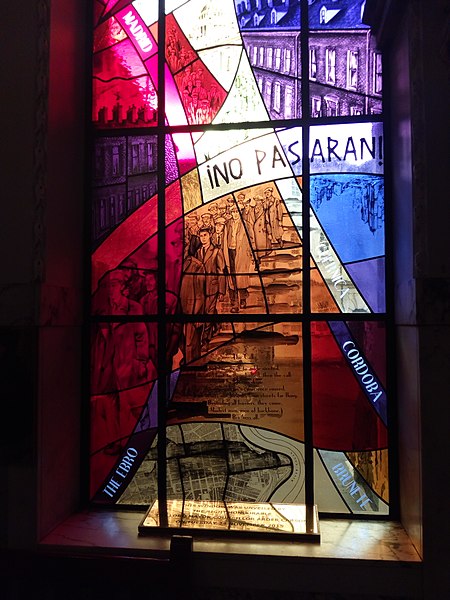
¡NO PASARÁN! (They (referring to the Nationalists) will not pass!)
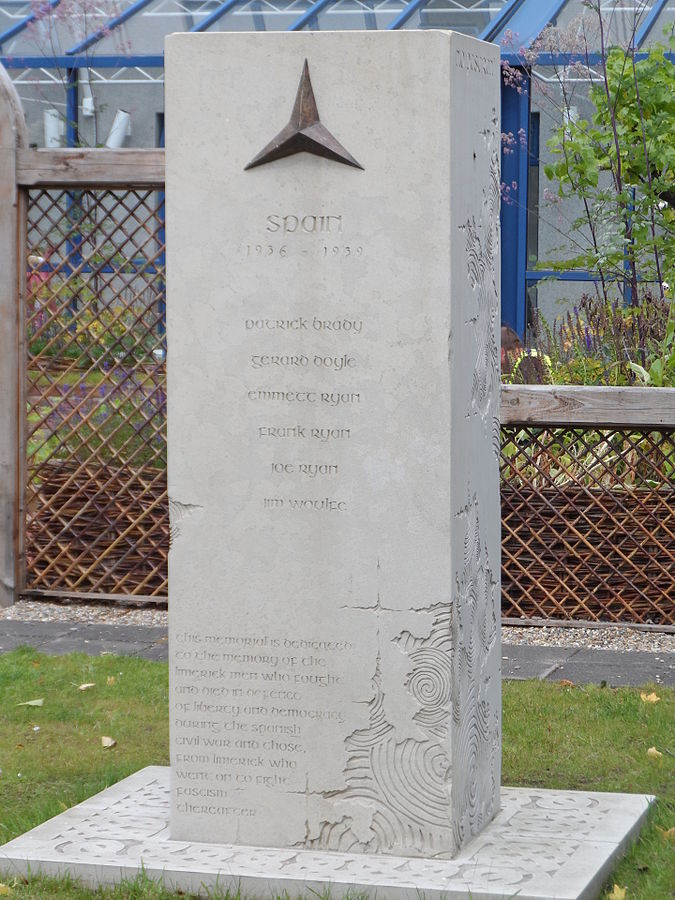
CULTURAL RESOURCES
Read about the Irish contribution to the International Brigades (Connolly Column)
Read about foreign women fighting and volunteering in the Spanish Civil War
Christy Moore sings “Viva la Quinta Brigada” (about Irish fighters who took part in the Spanish Civil War)
An Irishman in the International Brigades (The Irish Times 15/10/2018)
3.3 IMPACT ON CULTURE
Most intellectuals, writers and artists, both Spanish and foreigners, sided with the Republican cause. The Civil War was an inspiration for many of them since they saw it as a fight between democracy and fascism, a prelude of the wider conflict that was already stealing over Europe. The photographers Robert Capa from Hungary and Gerda Taro from Germany were first-hand witnesses of the fighting and made sure to leave behind an invaluable graphic legacy for future generations. Their photographs together with those taken by two other exceptionally talented photographers, both supporters of the anarchist faction, the Hungarian Kati Horna and the Austrian Margaret Michaelis, have created our contemporary imagery of Spain, and especially of Spanish women, during those extraordinary times.
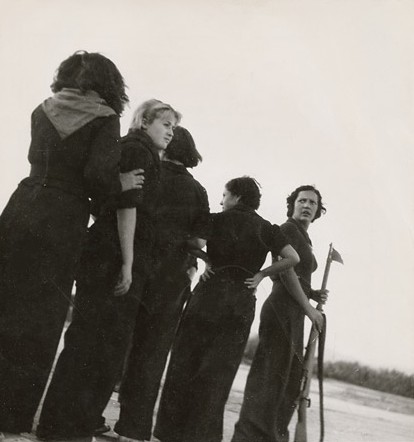
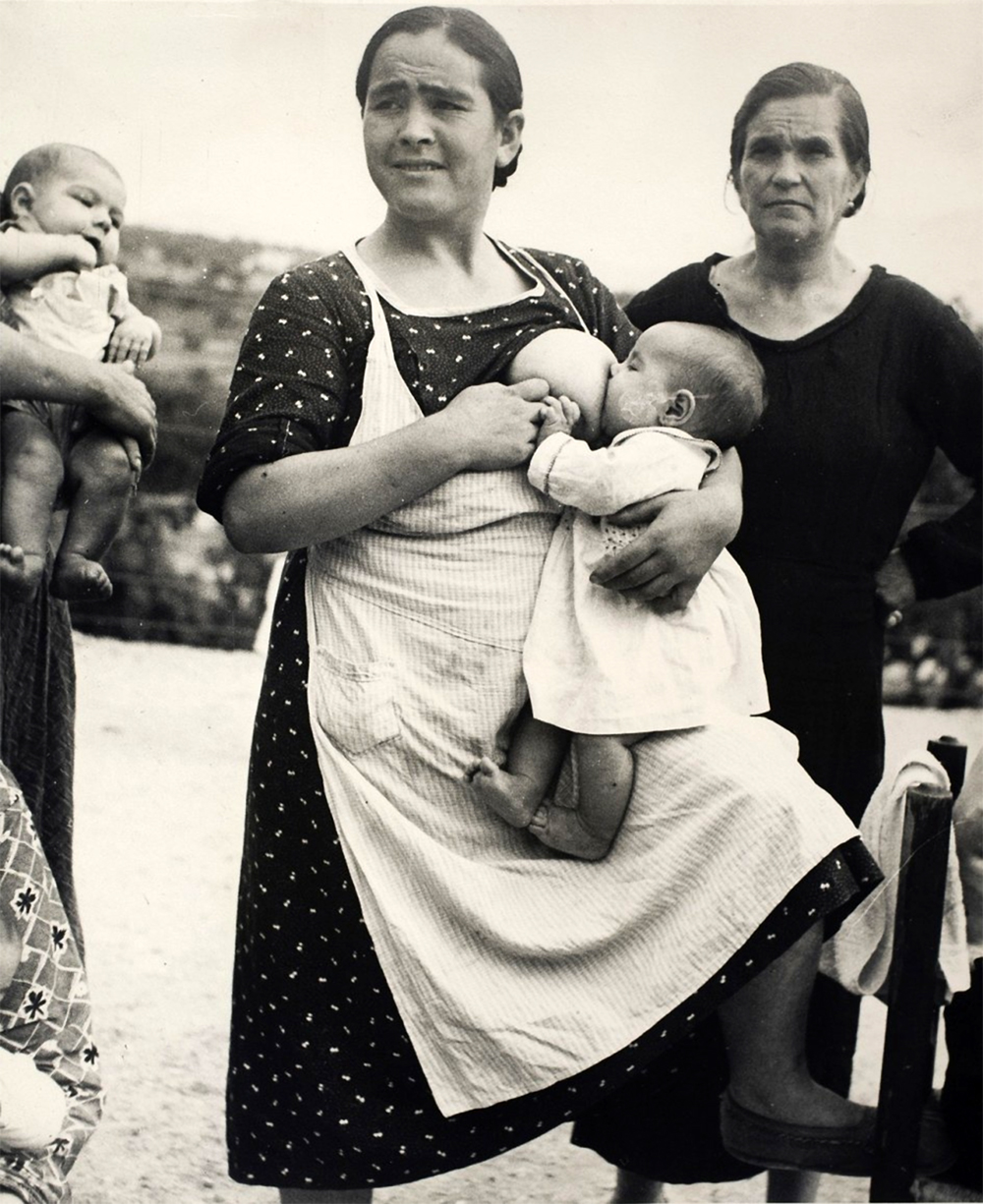
CULTURAL RESOURCES
The tragic death of Gerda Taro and the mysterious photograph. “Gerda Taro: ‘deathbed photo’ of one of world’s first war photographers found”, published in The Guardian (19/01/2018).
Who was Gerda Taro? YouTube (1:20)
La mirada de Kati Horna (Kati Horna’s Gaze) YouTube (1:09)
The Spanish painter Pablo Picasso portrayed the horrors of war in Guernica in 1937. The canvas is nearly 4 meters wide and 8 meters long, painted in black, white and gray. The painting was housed in the MoMA of New York until Spain became a democratic country again, as requested by Picasso himself. It finally travelled to Spain in 1981, six years after Franco’s death and eight after Picasso’s. It is now housed in the Reina Sofía Museum in Madrid and has become arguably the most iconic painting of the 20th century.
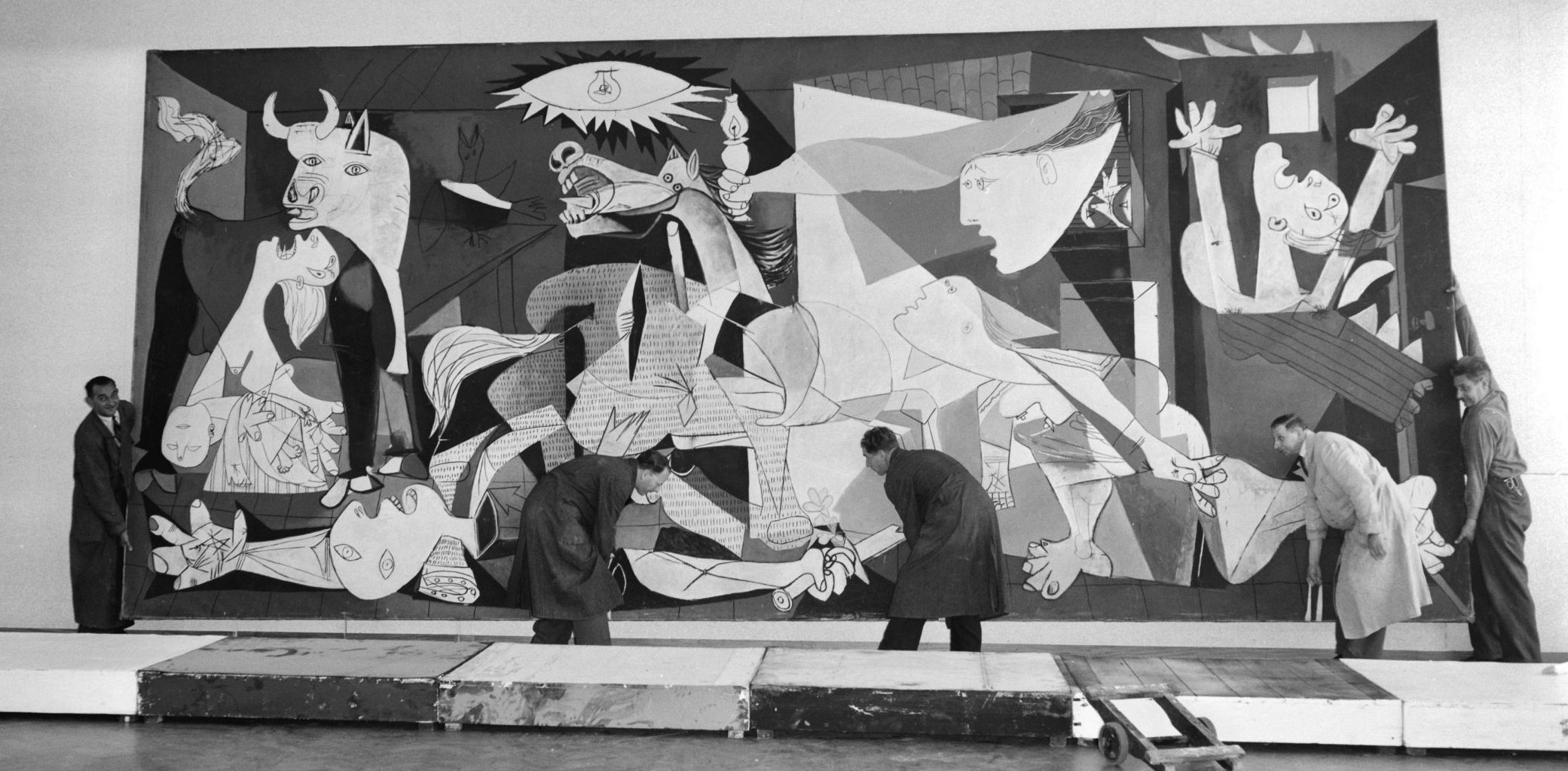
CULTURAL RESOURCES
Why is this painting so shocking? – Iseult Gillespie YouTube (5:15)
Guernica: Painting the End of the World BBC World News (26/10/2017) in YouTube (4:36)
The British writer George Orwell, renowned for his novel 1984, travelled to Spain to fight on the Republican side. As a result of this experience, he wrote Homage to Catalonia in 1938, a scathing personal account about the Stalinist Communist faction dismantling the Trotskyist POUM and Anarchist militias in Barcelona. In 1995 the British film director Ken Loach dealt with the same issue in Land and Freedom, an idealised and visceral portrayal of the Republican militias. Ernest Hemingway, who was a war correspondent in Spain during the war, wrote the American classic For Whom the Bell Tolls (1940), turned into a film three years later, and starring big Hollywood names of the time, Gary Cooper and Ingrid Bergman. More recently, the famous Mexican director Guillermo del Toro has made two fantasy films with stories set during the Civil War: El espinazo del diablo (The Devil’s Backbone) (2001) and El laberinto del fauno (Pan’s Labyrinth) (2006)
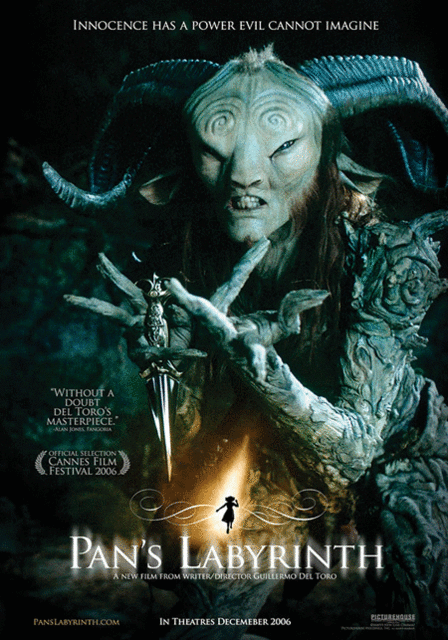
CULTURAL RESOURCES
War of Ideas. Article by renowned historian Eric Hobsbawm on intellectuals and their position in the Spanish Civil war. The Guardian (17/02/2007)
FILMS
El espinazo del diablo (The Devil’s Backbone) (2001) (available from the library) Gothic horror film about an orphans’ home during the Spanish Civil War.
El laberinto del fauno (Pan’s Labyrinth) (2006) (available from the library) Fantasy allegorical film set in early Francoist Spain (1944) about the fight between innocence and evil.
3.4 REPUBLICANS AGAINST REPUBLICANS
Both Homage to Catalonia and the film Land and Freedom deal with the internecine fights within the Republican side. The Socialists and Communists saw winning the war as a priority before attempting any further social reforms. For that reason, military discipline under a clear command had to be implemented. On the other hand, the Anarchists (CNT) and Trotskyists (POUM-Partido Obrero de Unificación Marxista) preferred fighting in independent militias with a less hierarchical discipline and believed in implementing the revolution at the same time. In Barcelona the militias took over power and confiscated land, industries, shops, official buildings and transport. Rejecting their authority or standing out as overtly bourgeois could cost you your life. Women fought alongside men in the militias, but this was not the case in the regular Republican army. The Republican army wanted to control the militias. The Communist Party had clear instructions from Stalin to stop the POUM and CNT, considered traitors to the Soviet cause. After days of street fighting in Barcelona between Anarchists and the Republican army, the Anarchists were forced to lay down their arms.
CULTURAL RESOURCES
George Orwell published the article ‘Looking Back on the Spanish Civil War’ in 1943. Read about it.
FILM
Land and Freedom (Ken Loach, UK, 1995). Two scenes:
Also available from the library.
3.5 THE ATROCITIES OF WAR
The Civil War was cruel and bloody. According to Preston (The Spanish Holocaust, 2013), some 200,000 men died fighting, and around the same number of men and women were executed behind the lines. It is impossible to know how many thousands (children amongst them) died in bombing attacks. There were killings, massacres and reprisals on both sides. However, according to Preston, most historians estimate that the repression carried out by the Nationalists was three times greater than that in the Republican zone. Carr (Spain. A History, 2000) writes:
As they advanced [the Nationalist army], they had massacred thousands of captured Republican soldiers, government officials, and known Republican supporters, trade unionists, and freemasons, men and women, following a deliberate policy of sowing terror to overcome resistance.
Badajoz, in Extremadura, was taken by the Nationalists as early as August 1936. The reprisals on the population were extreme. Civilians, women and children too, were shot in the streets. The general in command ordered to imprison Republican sympathisers in the city’s bullring. From there, they were taken to be executed. The estimated number of deaths was around 2,000.
Republican women were particularly humiliated in many villages and towns taken by the Nationalists. Their hair was shaved. They were forced to drink castor oil to provoke diarrhoea and were paraded through the streets.
Amongst the many massacres, the air bombing of the small Basque market town of Guernica (Gernika in Basque) by the German Luftwaffe, Franco’s ally, killed 300 of its inhabitants and caused total destruction. It made headlines around the world and, although not the only case of a bombing attack against civilians during the Civil War, it has become a symbol of a new type of warfare that does not respect civilian lives, unfortunately too present in our times.
The Nationalist side tried to manipulate the truth about the bombing of Gernika accusing the ‘reds’ (the Republicans) of setting fire to this town. Luckily, the South African-born British reporter George Steer witnessed the attack and was able to send a scoop report to his paper, The Times, describing the event and its aftermath. The fact that he wrote in English and for a prestigious paper made the news spread quickly to all the international press around the world.
Nobody was safe. The poet and playwright Federico García Lorca, of international renown, was taken from his home in Granada, shot and buried in an unmarked spot, as a reprisal for his sympathies towards the Republic and his homosexuality. Despite great efforts, his grave remains unfound.
Probably the worst episodes of killings on the Republican side were committed against members of the Catholic Church, seen as class enemies, especially by Anarchists. Churches and convents were systematically looted and burned down. Around 4,000 priests, 2,300 monks, 300 nuns and 13 bishops were murdered in different anticlerical frenzies by militias that the Republican government and army were unable to control.
As a whole, the single most infamous act of violence carried out by the Republicans was the massacre of Paracuellos del Jarama near Madrid, where 2,000 inmates (some historians increase this figure considerably) from the main prison in Madrid, incarcerated for political reasons, were taken to the small town of Paracuellos and executed. This happened during the siege of Madrid by the Nationalist army at the beginning of the war. The massacre was justified by the Republican authorities by alleging the prisoners were a danger to the Republic, a fifth column within a besieged Madrid.
3.6 SEQUENCE OF MAPS DEPICTING THE EVOLUTION OF THE WAR
Area under Nationalist control (in pink)
Area under Republican control (in blue)
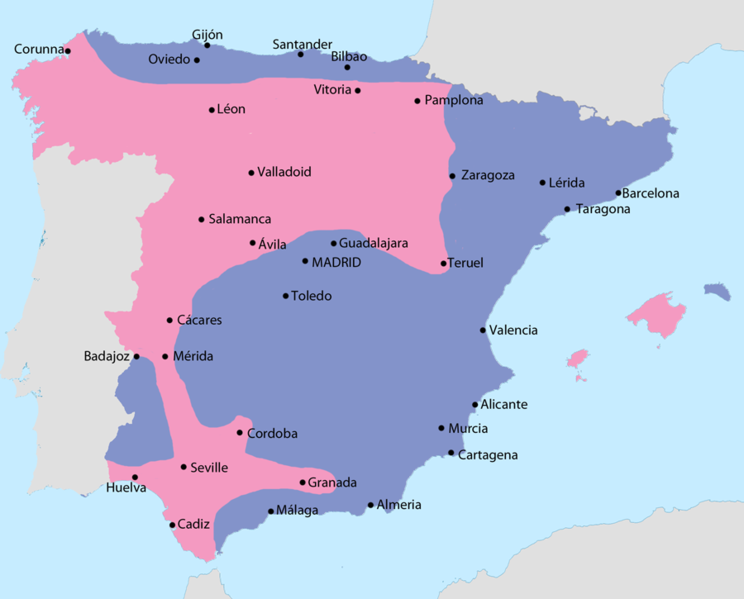
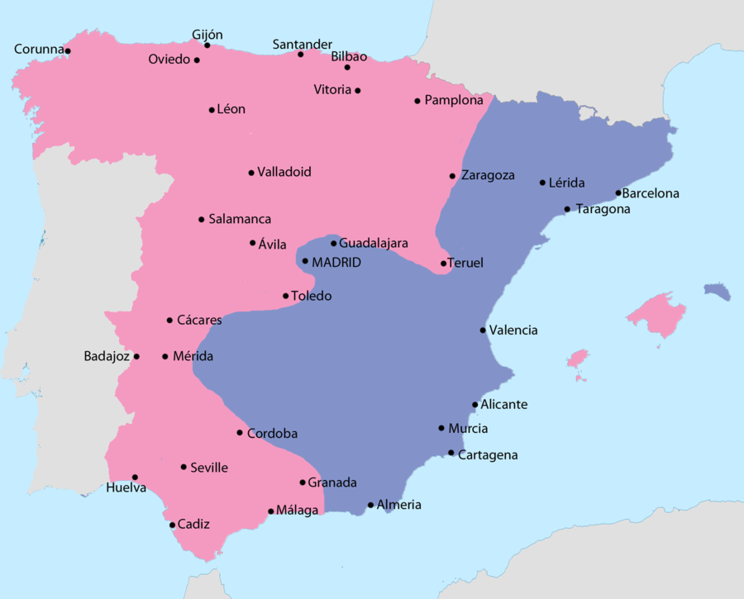
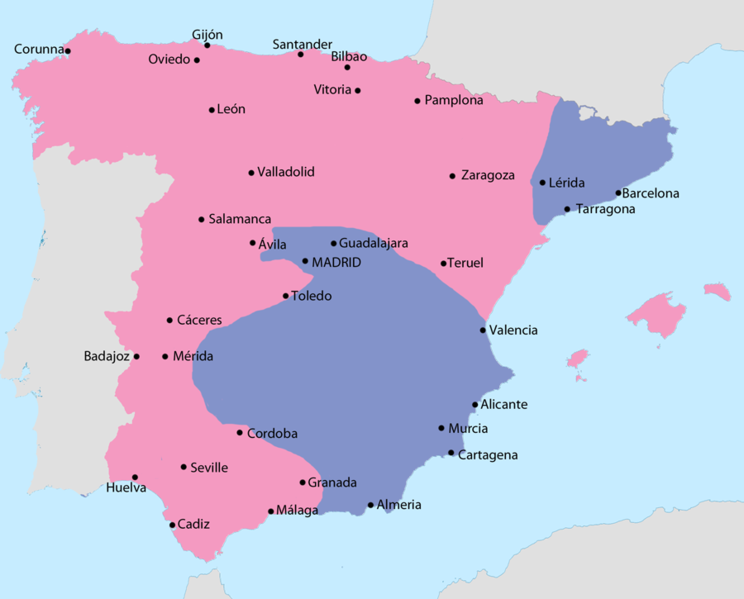
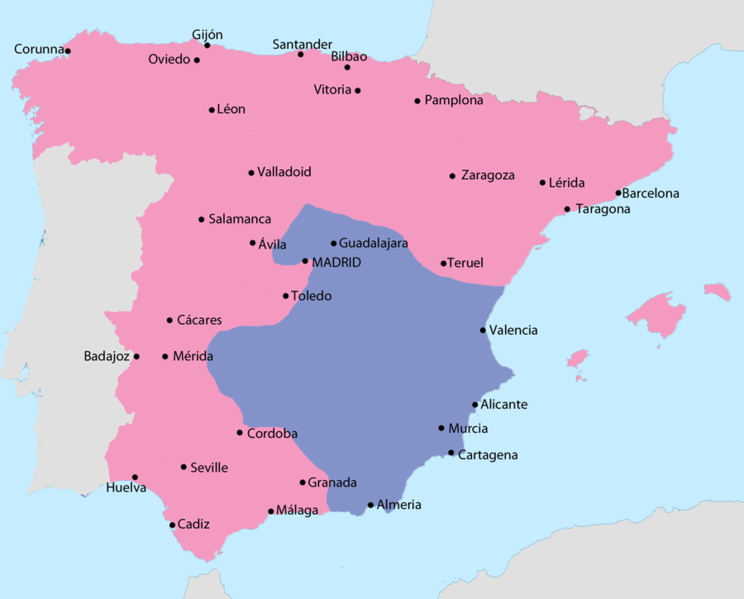
3.7 AFTERMATH
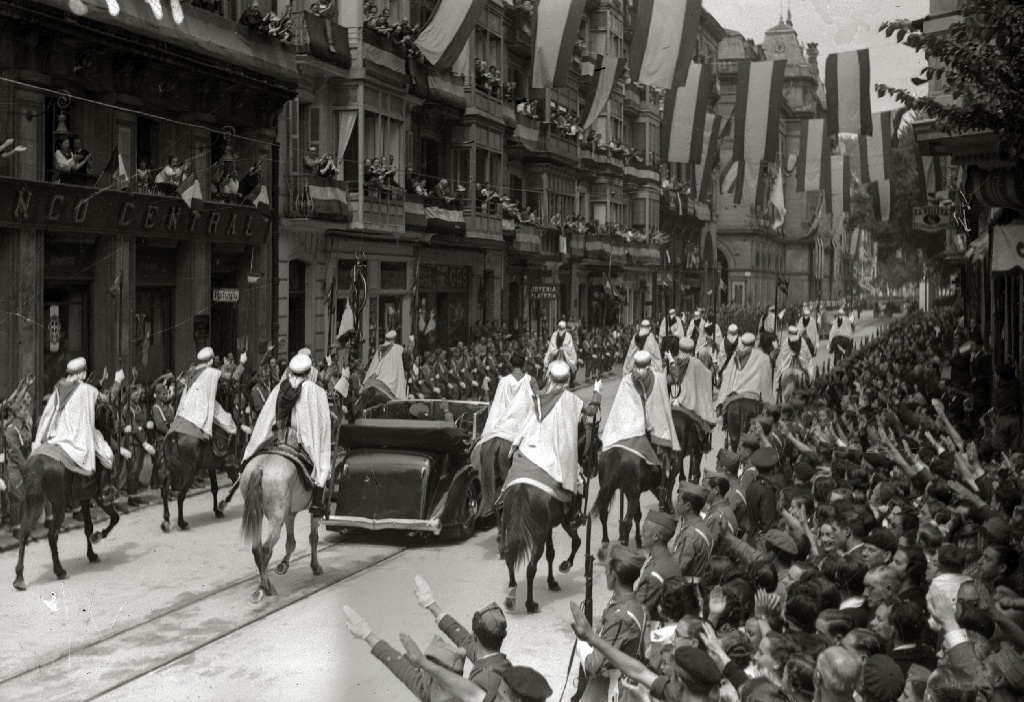
After nearly three years of relentless war, the victorious Nationalist army entered Madrid in March 1939. Members of the Republican government and the Catalan and Basque governments left Spain to save their lives and organize some form of resistance from abroad, which never happened. The final toll was some half a million dead. For the defeated Republicans who stayed in Spain their fate was an ordeal of extra-judiciary executions (around 20,000) and bodies buried in unmarked mass graves. The lucky ones served a few years in prison. The population was to face years of hunger due to a strict food rationing. As a result, a vibrant black market sprang up, making some opportunistic people very rich.
Exile was also an option. France found itself inundated with nearly half a million unwanted refugees who were put in insalubrious refugee camps. Only Mexico opened its arms to welcome Republican refugees. A significant number of Spanish artists and intellectuals made their home abroad, Picasso amongst them.
It is only fair to mention that many Spaniards exiled in France went on to join the French army and the resistance against the Nazi occupation during the Second World War (1939-1945), therefore, fighting two wars back to back. They were acutely aware that they were confronting the same enemy in both conflicts. Between 9,000 and 12,000 of them were deported to Nazi labour camps, mainly Mauthausen, with Franco’s approval and encouragement. We are familiar with the yellow Star of David that Jewish prisoners had to wear on their uniform. In the same fashion, Spanish refugees imprisoned in the camps wore a blue triangle, reserved for stateless people, since Franco had deprived them of their nationality. Most died out of exhaustion and hunger; some were used as guinea pigs in brutal medical experiments and others, simply, committed suicide.
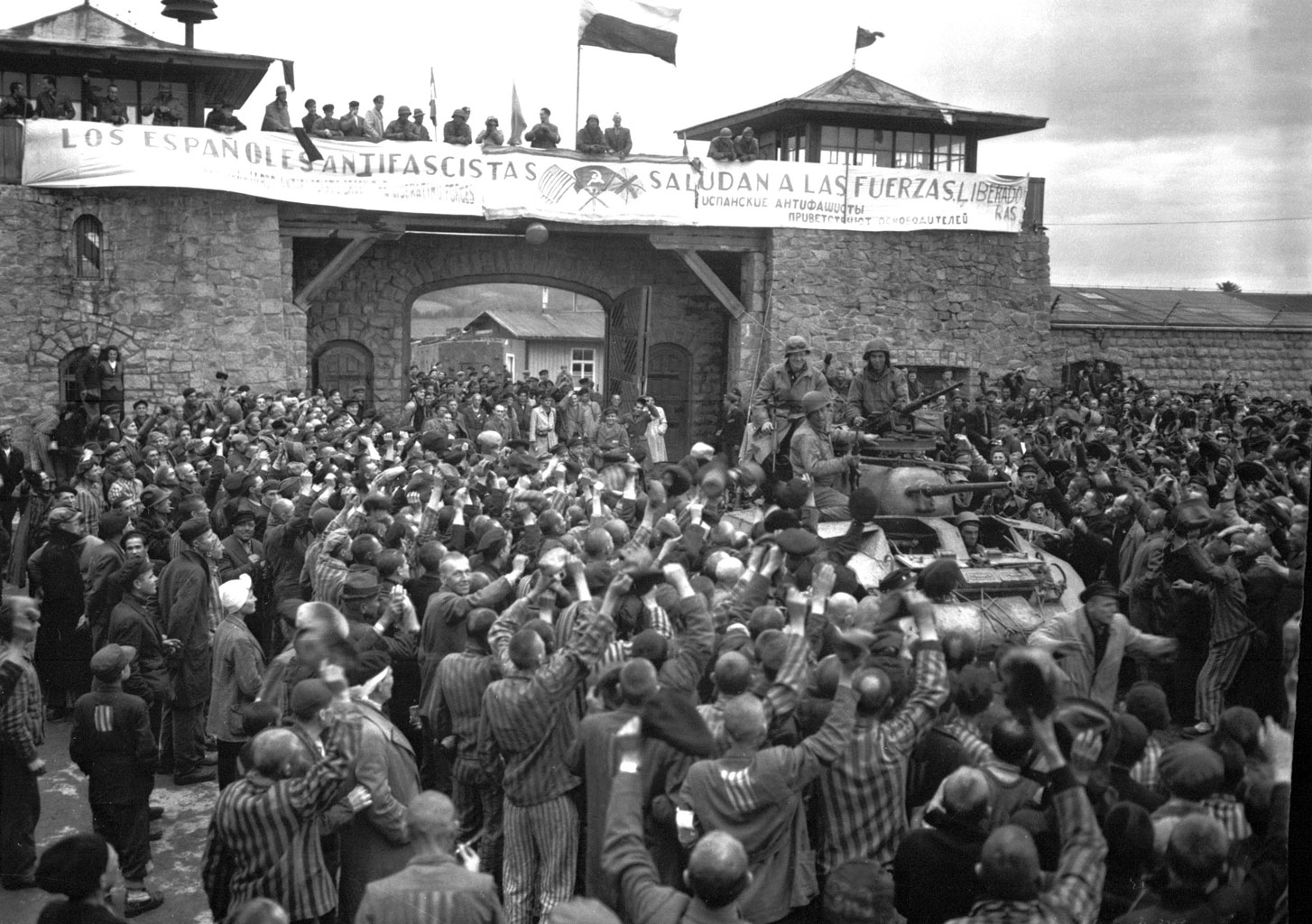
CULTURAL RESOURCES
Paco Aura. Testimoni viu de Mauthausen (Paco Aura. Living Testimony of Mauthausen) Short animation film in YouTube (8:33) (in Catalan with English subtitles)
FILM
El fotógrafo de Mauthausen (The Photographer of Mauthausen) (2018) (Netflix) Based on real events, a photographer tries to save evidence of the horrors committed inside the walls of a Nazi concentration camp in Mauthausen.
Franco ruled Spain under a dictatorial regime until his death in 1975. After he died, democracy was restored in Spain. However, the Civil War and its aftermath was almost a taboo topic in families and schools. The defeated side, the Republicans, had been forgotten in order to avoid reviving the past. Only in 2007, a Socialist government decided to implement a law to recover the memory of the war. The Historical Memory Act (Ley de la Memoria Histórica) condemned Francoism officially for the first time in democratic times. It made it mandatory to remove Francoist symbols, such as monuments and street names, from public spaces. In a gesture to recognize the sacrifice and generosity of the volunteers of the International Brigades, the survivors and their descendants were granted Spanish nationality. However, the most important provision of the law was the one that envisaged the opening of mass graves where the bodies of Republican executed had been abandoned. It has been a complex process full of political obstacles. There are still well over 100,000 people’s remains to be found and identified, the second largest number of disappeared in the world after Cambodia.
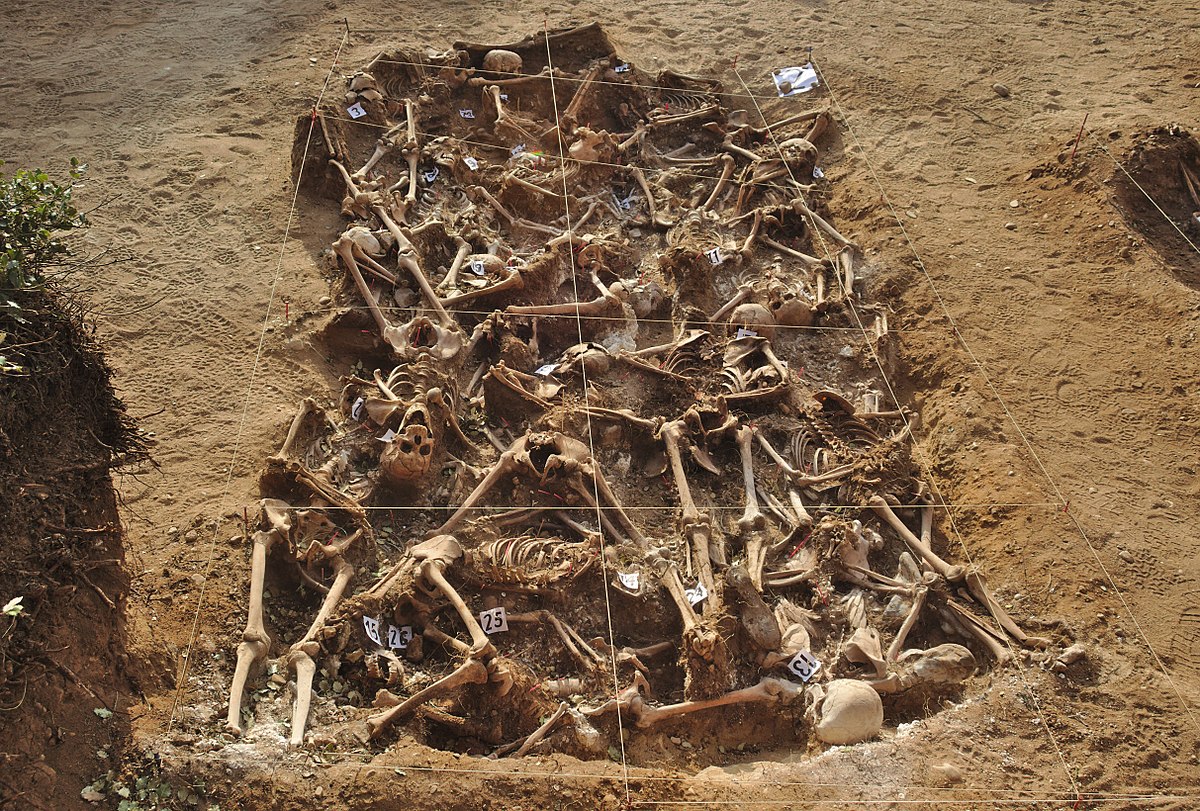
CULTURAL RESOURCES
Map of mass graves (Ministerio de Justicia de España)
LA GUERRA CIVIL ESPAÑOLA
La guerra civil española duró casi tres años, de 1936 a 1939. Los dos bandos que se enfrentaron eran los republicanos con el Ejército Republicano o Popular, y los nacionales, con el Ejército Nacional.
Los nacionales dieron un golpe de estado contra el gobierno legítimo de la República que desembocó en una guerra civil. Los dos bandos tenían una ideología y objetivos contrarios. Los republicanos no eran un grupo uniforme. Estaba formado por liberales, socialistas, comunistas y anarquistas. Los liberales y los socialistas defendían el derecho a un país democrático moderno, mientras que los comunistas y los anarquistas querían una revolución social. Pero estaban unidos por un deseo de tener un país moderno con buenas condiciones laborales para los trabajadores y un reparto de la tierra para los campesinos. También apoyaban la autonomía de las regiones históricas (Cataluña, Galicia y País Vasco).
En el bando nacional también había grupos diferentes: católicos conservadores, monárquicos, falangistas (fascistas) y carlistas (monárquicos pero seguidores de un heredero al trono diferente). Para ellos, España tenía que ser un país monárquico y católico, en el que gobernasen las élites. El orden y la unidad del país eran lo más importante. Sus enemigos eran la “anti-España” y era necesaria una cruzada contra ellos.
El general Francisco Franco se convirtió en el líder del ejército nacional. Los nacionales tuvieron ayuda de Hitler y Mussolini, que mandaron aviones, armas y tropas. Portugal, bajo la dictadura de Salazar, también les ayudó.
Los republicanos no recibieron ayuda ni de Gran Bretaña ni de Francia, por cuestiones políticas. Solo Stalin envió tropas, armas, alimentos y combustible desde la Unión Soviética a cambio de las reservas de oro del estado. Sin embargo, miles de voluntarios extranjeros lucharon a favor de la República: las Brigadas Internacionales. La gran mayoría de los intelectuales tanto españoles como extranjeros, apoyaban a la república y, en algunos casos, lucharon en la guerra.
Se cometieron atrocidades en los dos bandos: masacres, represalias y ejecuciones. El bombardeo del pequeño pueblo de Gernika en el País Vasco en abril de 1937, llevado a cabo por aviones alemanes y dirigido a civiles, se ha convertido en símbolo de las atrocidades de la guerra gracias al famoso cuadro de Pablo Picasso. Se puede ver este cuadro en el Museo Reina Sofía de Madrid.
Los nacionales ganaron la guerra. El fin de esta guerra representó el exilio para cientos de miles de españoles, la ejecución o el encarcelamiento para otros miles, y el hambre y el miedo para la gran mayoría de la población. Muchos de los exiliados en Francia lucharon contra los nazis en la Segunda Guerra Mundial y entre 9.000 y 12.000 acabaron deportados a los infames campos de concentración de Alemania y países ocupados. La mayoría murió allí de hambre, explotación, a causa de experimentos médicos o, en algunos casos, se suicidaron.
En 2007 el gobierno socialista del presidente Rodríguez Zapatero aprobó la Ley de la Memoria Histórica. Se condenó oficialmente al franquismo por primera vez desde la muerte del dictador. La ley obliga a eliminar los símbolos franquistas (estatuas, nombres de calles, etc.) de los espacios públicos. También contempla la exhumación de los restos de más de 100.000 personas que fueron ejecutadas por los nacionales y que todavía se encuentran desaparecidos en fosas comunes.
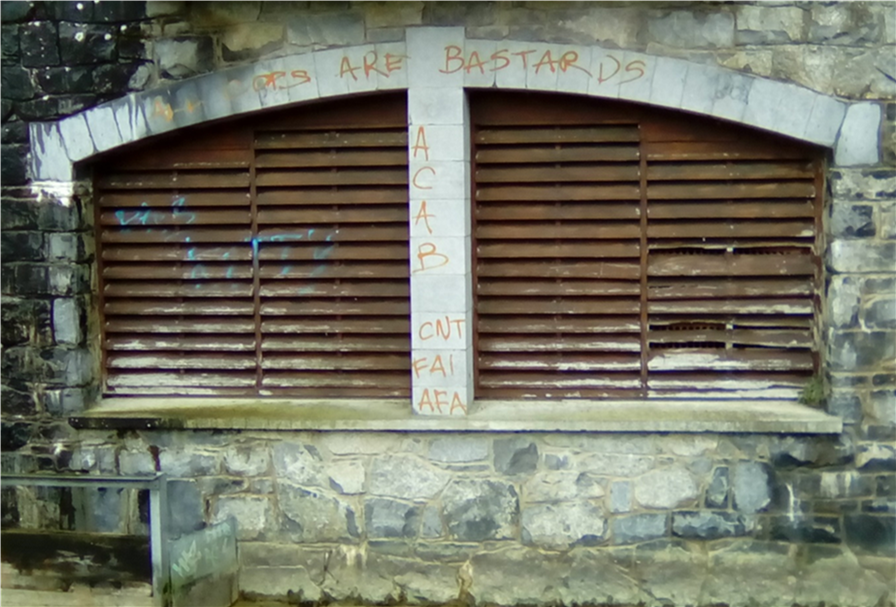
It is important to know the past in order to understand the present. Walking in Galway (Ireland) in 2018 I saw this graffiti referring to the Spanish Anarchist organizations CNT and FAI.
CULTURAL RESOURCES
The 14 best books about the Spanish Civil War (thelocal.es)
FILMS
La lengua de las mariposas (Butterfly’s Tongue) (1999) (available from the library) Drama about the relationship of a teacher and his pupil in Galicia in 1936.
Soldados de Salamina (Soldiers of Salamina) (2003) (available from the library) Drama about a writer’s research on an episode of the Spanish Civil War.
Media Attributions
- Nationalist Army
- Dabrowszczacy_przysiegaja_wiernosc_sprawie_Republiki
- Oliver_law_(1900-1937)
- Ventana_republicana_en_el_Ayuntamiento_de_Belfast
- Memorial_to_Limerick_International_Brigade
- Milicianas_em_1936_por_Gerda_Taro
- Inudea._Argazkilaria_Kati_Horna_Kati_Deusch._Photo_taken_in_1937 (1)
- Plaatsen_Guernica_van_Picasso_in_Stedelijk_Museum,_Bestanddeelnr_907-8864
- Pans Labyrinth
- Map_of_the_Spanish_Civil_War_in_September_1936
- 744px-Map_of_the_Spanish_Civil_War_in_October_1937
- Map_of_the_Spanish_Civil_War_in_July_1938
- 744px-Map_of_the_Spanish_Civil_War_in_February_1939
- KZ_Mauthausen
- Galway window
